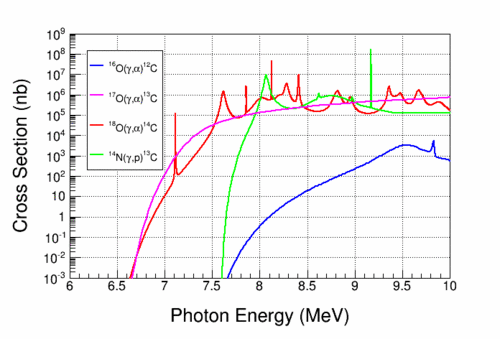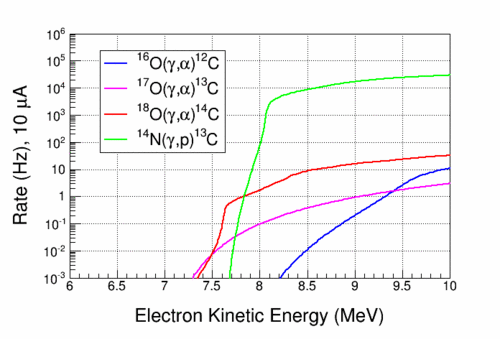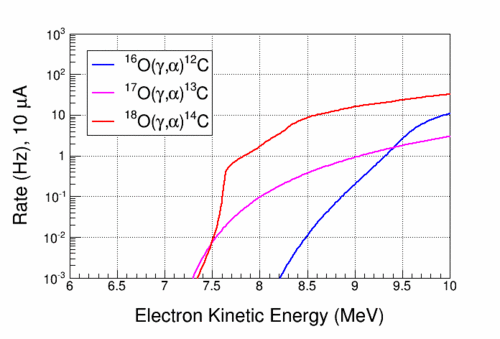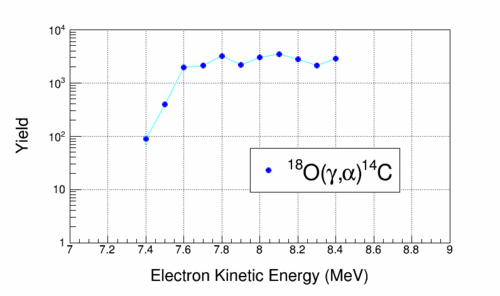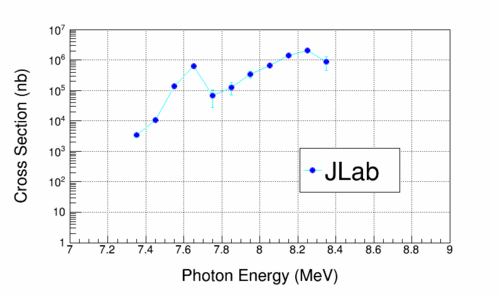Difference between revisions of "Bubble Chamber Beam Test September 2015"
Jump to navigation
Jump to search
| Line 52: | Line 52: | ||
<span style="font-size:150%"> '''Run Plan:''' </span> | <span style="font-size:150%"> '''Run Plan:''' </span> | ||
| + | |||
* ''Check if Bubble Chamber is working properly:'' | * ''Check if Bubble Chamber is working properly:'' | ||
Revision as of 16:15, 6 September 2015
Bubble Chamber Turn On
- Fill with natural N2O – test bubble chamber systems operation
- With beam on bubble chamber radiator:
- How does CCD camera perform under beam-on conditions?
- Count rates on bubble chamber. Do we get single or multiple bubbles from Bremsstrahlung beam exposure?
- Measure gamma ray beam spatial profile as reflected by bubble distribution. Is collimator effective in defining the gamma-ray beam?
- Background measurements:
- Measure beam off environmental background in chamber-injector area
- Measure beam on background by looking outside fiducial volume
- Measure background with beam to Faraday Cup in CEBAF beamline (about two meters from chamber)
- Measure neutron events in chamber. Neutron radiation detectors in injector region will indicate if any neutrons are generated (especially at beam kinetic energies higher than 8.5 MeV).
Bubble Chamber Beam Test
- Chamber is filled with natural N2O
- Cross sections:
The cross sections are shown in the following figure:
- Expected rates:
The expected rates are calculated with 3 cm cell thickness and thin radiator.
- The expected rates are shown in the following figure:
- The expected rates from oxygen isotopes are shown in the following figure:
Run Plan:
- Check if Bubble Chamber is working properly:
- Start with K.E. of 7.7 MeV
- Determine the initial operational pressure and temperature
- Measure bubble rate. The expected rate is 1 bubble per sec at 10 µA
- Measure rate vs beam current (0.01 – 10 µA)
- Suppression of 14N(γ,p)13C events:
- Start with beam at K.E. 7.0 MeV
- Increase beam K.E. by 0.2 MeV steps all the way to 8.6 MeV
- Adjust beam current to maintain a bubble rate of few per minute
- Reproduce the overall rate shown above
- At K.E. of 8.6 MeV, increase the chamber threshold by increasing the pressure. Suppress the 14N(γ,p)13C events.
- Once 14N(γ,p)13C is suppressed, the rate should drop by three orders of magnitude
- Measuring rates from 18O(γ,α)14C:
- Now the chamber is at the new pressure
- Start with beam at K.E. 7.2 MeV
- Increase beam K.E. by 0.2 MeV steps all the way to 9.2 MeV
- Adjust beam current to maintain a bubble rate of few per minute
- Reproduce the overall rate from oxygen isotopes shown above
- Note the change in slope of rates vs. beam K.E. and the sharp kink around 7.6 MeV
- Measuring 18O(γ,α)14C cross section:
- Start with beam at K.E. 7.4 MeV
- Increase beam K.E. by 0.1 MeV steps all the way to 8.4 MeV
- Adjust beam current to maintain a bubble rate of few per minute
- Perform Penfold-Leiss unfolding
| Beam Kinetic Energy (MeV) | Beam Current (µA) | Time (hour) |
| 7.4 | 10 | 10 |
| 7.5 | 10 | 10 |
| 7.6 | 10 | 5 |
| 7.7 | 2 | 5 |
| 7.8 | 2 | 5 |
| 7.9 | 1 | 5 |
| 8.0 | 1 | 5 |
| 8.1 | 0.8 | 5 |
| 8.2 | 0.4 | 5 |
| 8.3 | 0.2 | 5 |
| 8.4 | 0.2 | 5 |
The expected yield is shown in the following figure:
The Penfold-Leiss unfolded cross section is shown in the following figure:
